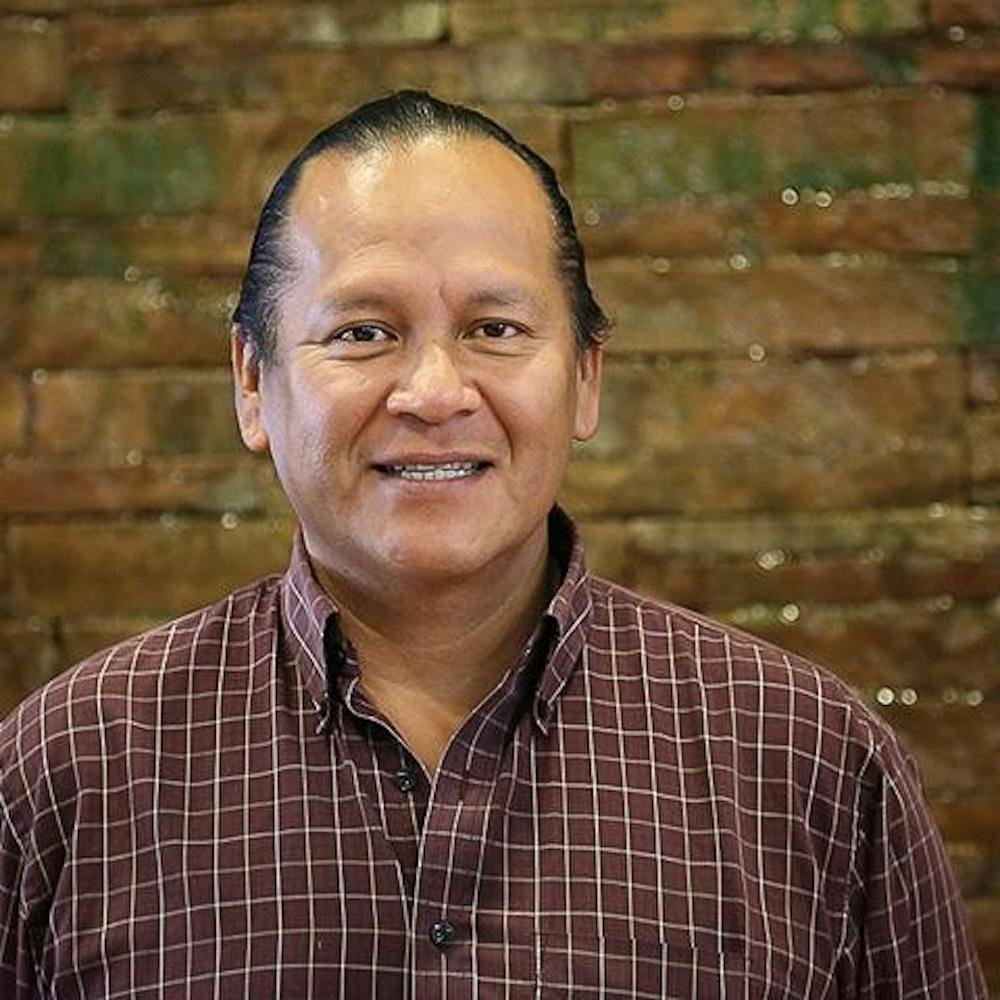Art has long been used as a form of commentary on current events, and Ricardo Caté’s “Art Through Struggle” exhibition is one local artist’s unique way of accomplishing this. Displayed in the Indian Pueblo Cultural Center until Jan. 6, “Art Through Struggle” is a depiction of Caté’s personal experiences as a Native American man in New Mexico.
While the title of the exhibit gives the impression that it is a solemn experience, Caté approaches his subject matter with a sense of humor.
His work as an artist also includes the comic strip “Without Reservations” that has been printed regularly in the Santa Fe New Mexican newspaper, making him the only Native American artist whose work can be seen in a mainstream daily newspaper.
Caté, who briefly attended the University of New Mexico and has since returned to speak about his art, has become a nationally recognized artist for his work with comics. The acrylic paintings that have been created from these comics retain the comics’ balance between humorous and thoughtful.
The use of everyday situations in the artwork serves as a reminder to viewers that Native Americans should not be ignored as a vital part of the American population.
“We are teachers, scientists, politicians, astronauts,” Jon Ghahate, assistant curator at the museum, said. “We are everywhere in the community, and these paintings help to remind people of that.”
As is the case with a great deal of art in recent years, some of Caté’s work turns a critical eye on the presidency of Donald Trump. A specific incident depicted in several of the paintings was the fight against the construction of the Dakota Access Pipeline, a project which was approved by the Trump administration and which runs through Native American lands.
One particularly powerful painting shows a bulldozer overturning piles of earth filled with Native American bones, as the driver seems to ignore the protesters standing before him.
One of the goals of incorporating political messages into this art exhibit is to show how closely politics are entwined with the everyday experiences of Native Americans.
“If politics have any effect, we can certainly see that in places like South Dakota, where Natives were marginalized and not allowed to vote because they didn’t have home addresses, so politics certainly have an effect on everyday life,” Ghahate said.
Displaying art with this type of message to the general public also helps to raise awareness about issues specifically faced by Native American communities. These issues can be widespread, such as the marginalization of Native American voters, or more personal experiences that Caté believes should be shared.
Caté said that this serves as a reminder that Native Americans have the right to be listened to and supported by their communities and the country as a whole, because their experiences cannot be separated from the larger experience of living in the United States.
Get content from The Daily Lobo delivered to your inbox
Beyond depicting struggles faced in the present day, Caté said he also uses his art as reminder of the violent history between Native Americans and the white colonizers who tried to wipe out their cultures when they arrived in North America.
One of the largest paintings in the exhibit shows an army of conquistadors riding through the New Mexican desert with their horses and armor. “We come in peace,” their leader tells the lone Native American man observing their arrival.
Similar uses of wit are present in most of Caté’s other paintings. He said he uses humor to push back against large issues such as the Dakota Access Pipeline and the centuries-long oppression of Native Americans, as well as instances of everyday, casual racism that are still incredibly harmful.
In observing the paintings, the viewer can see an artist using his unique perspective to take control of the complex narrative that affects not only him, but the rest of the Native American community.
“I am not a spokesperson for any tribe,” Caté said. “I am simply drawing the funny side to what I know and experience as a Native in this country.”
Veronica Apodaca is a culture writer for the Daily Lobo. She can be contacted by email at culture@dailylobo.com or on Twitter @veeapodaca.






